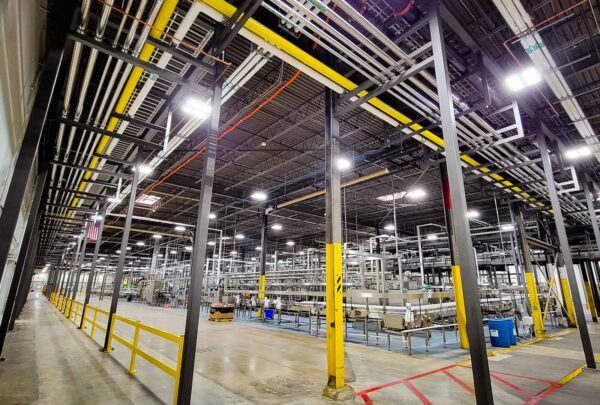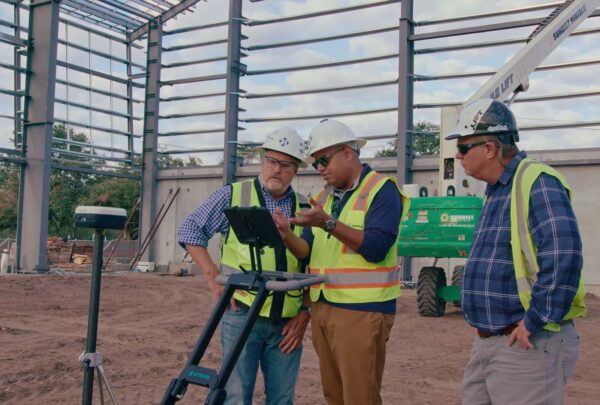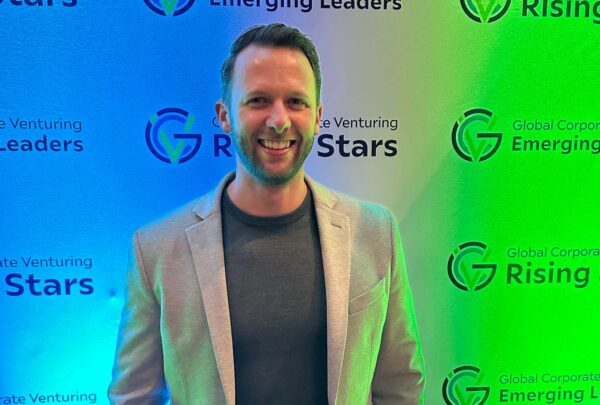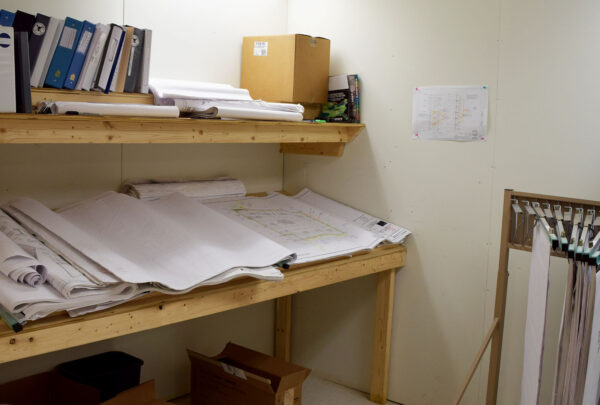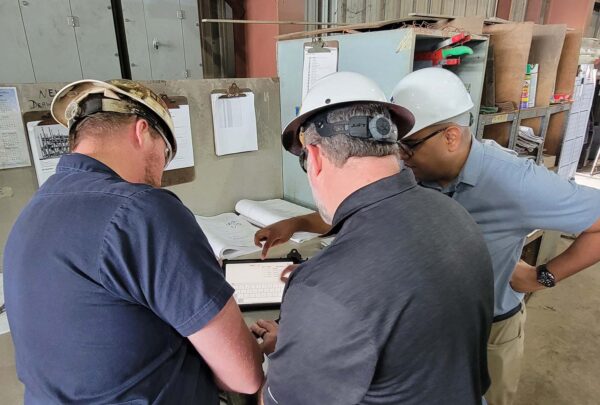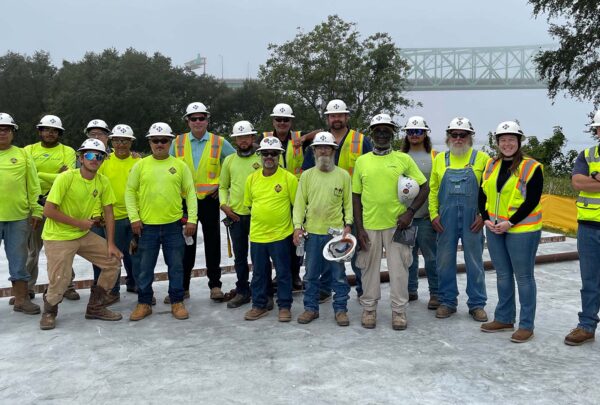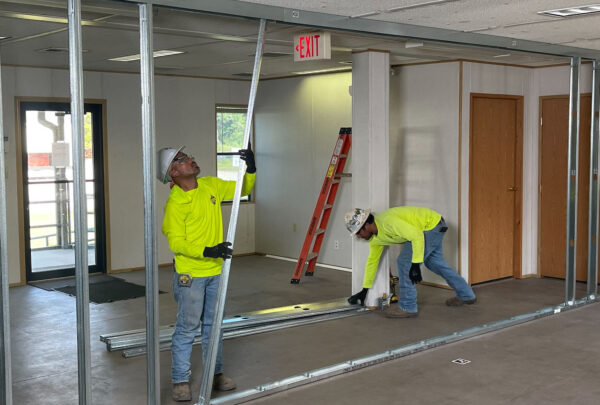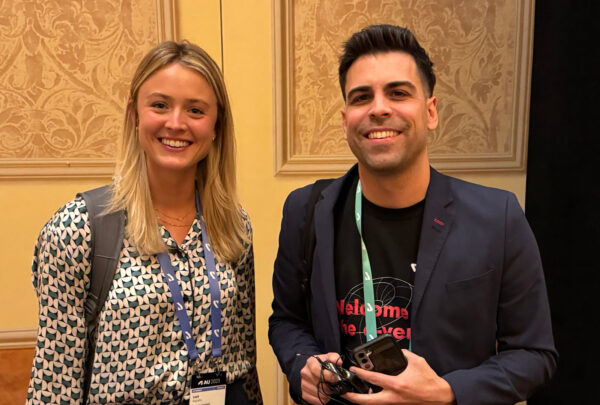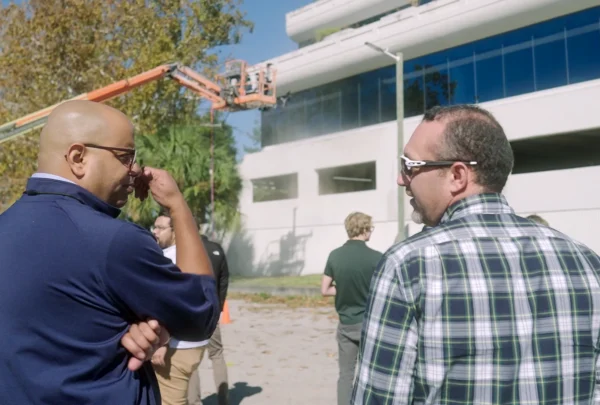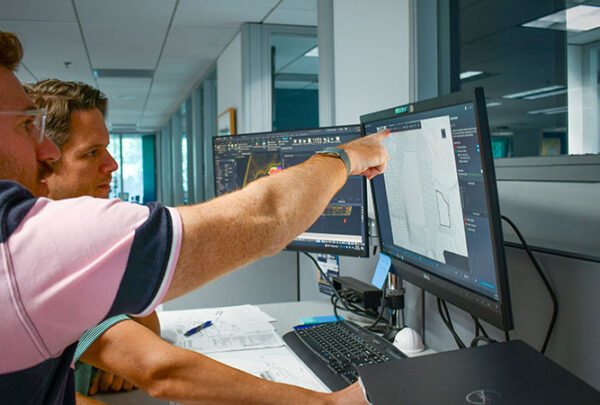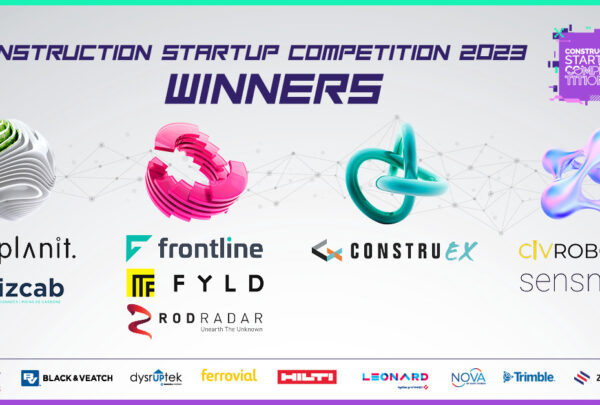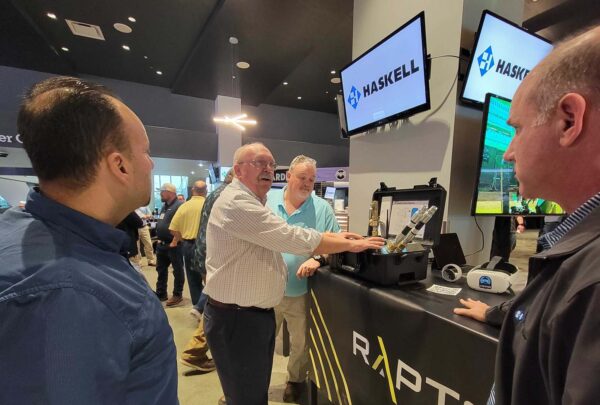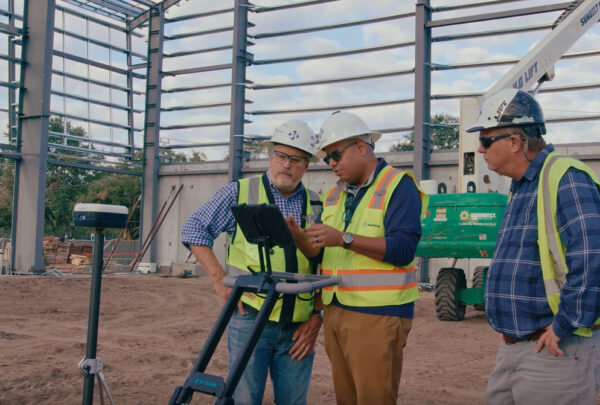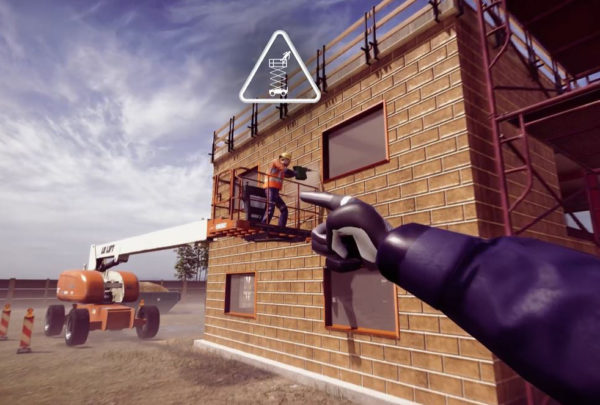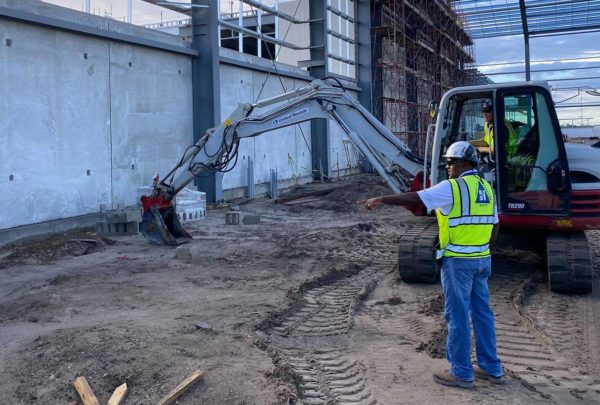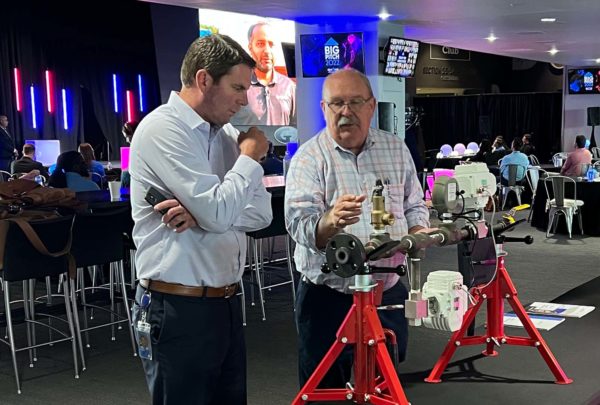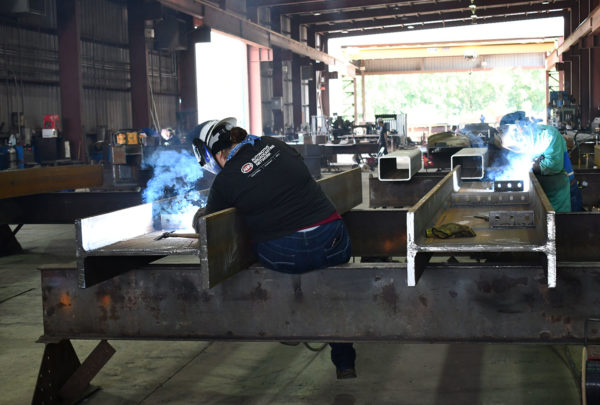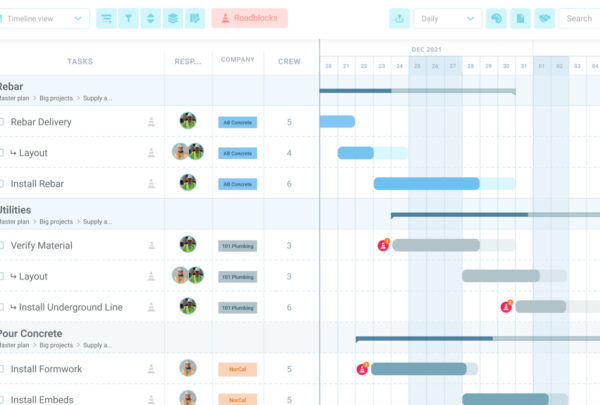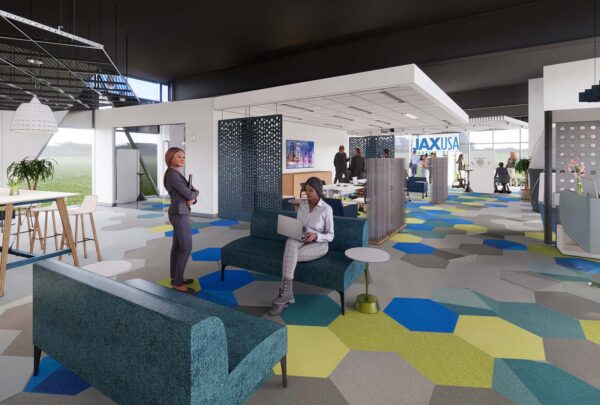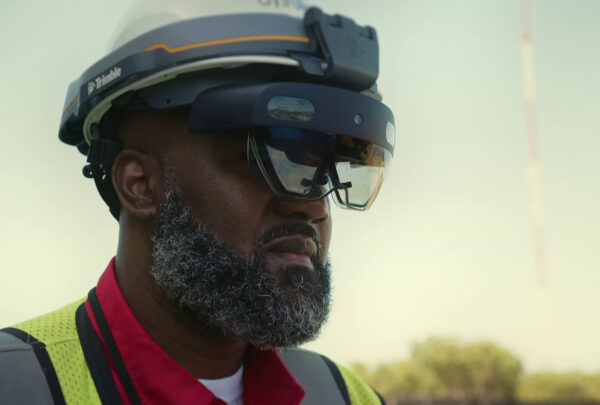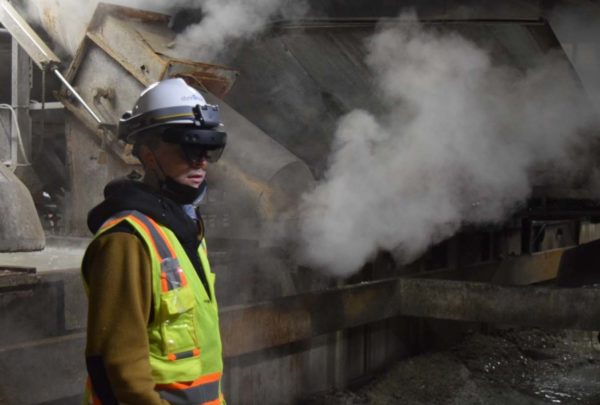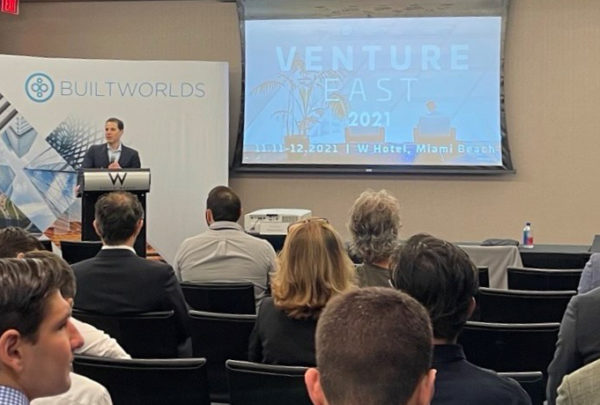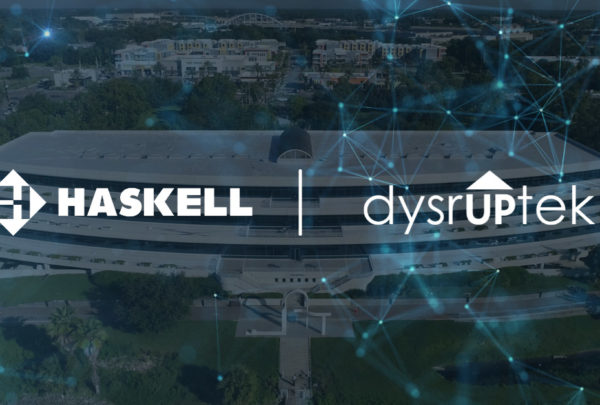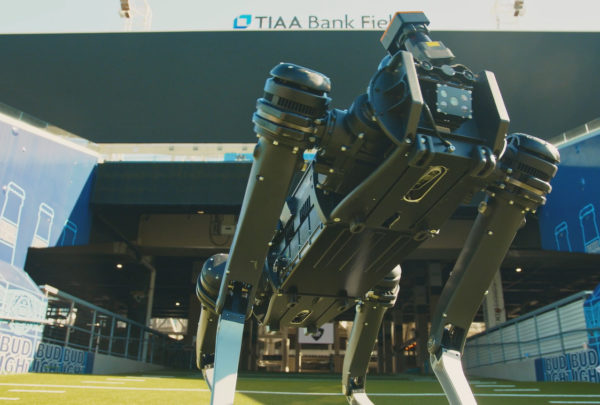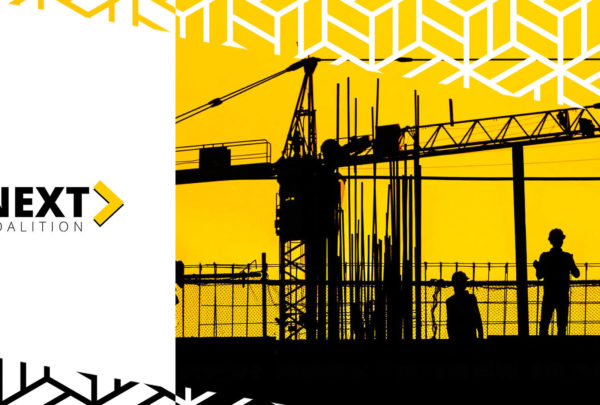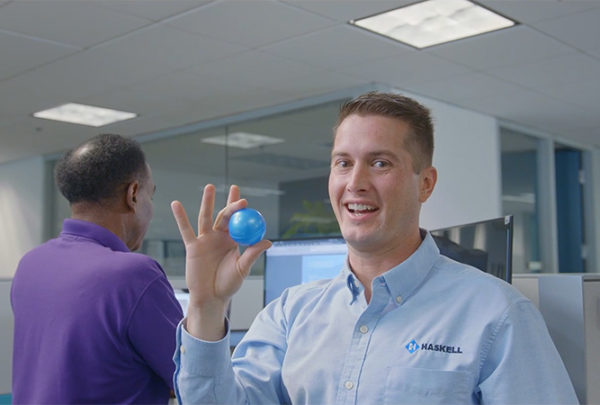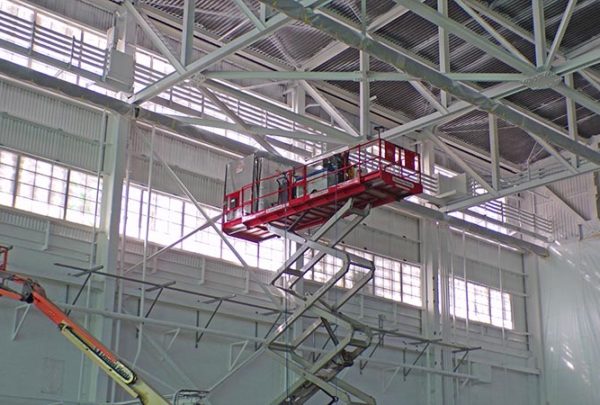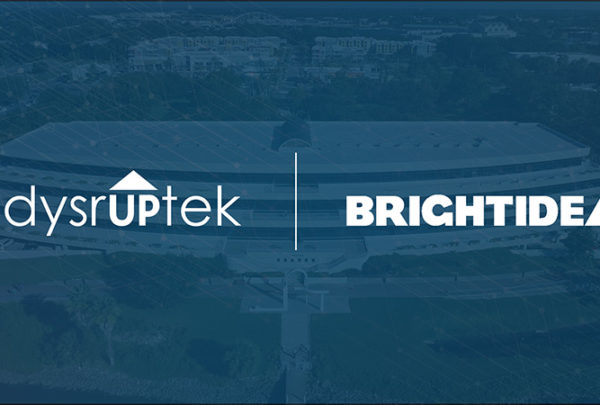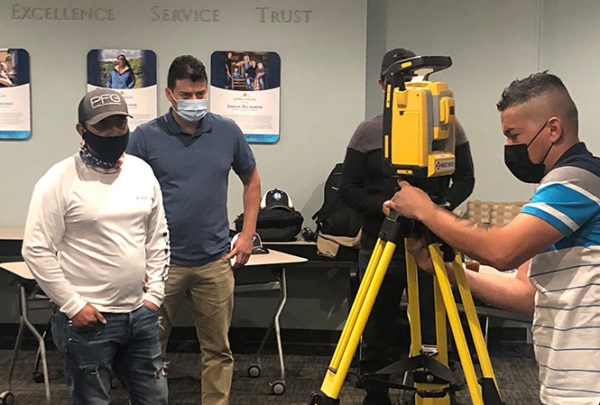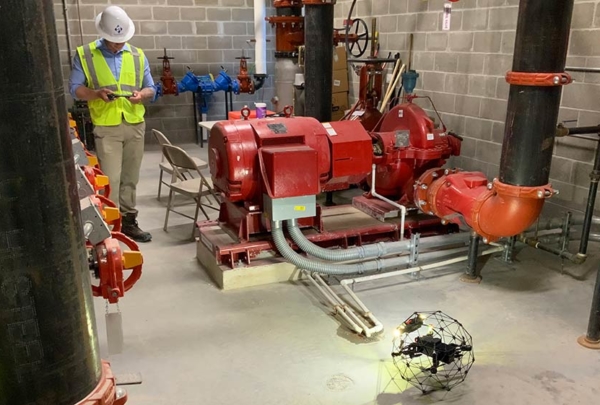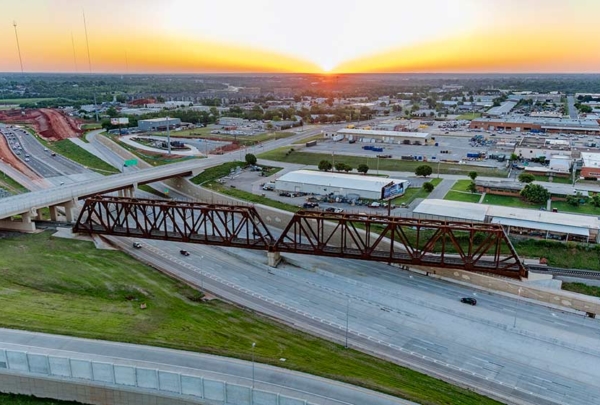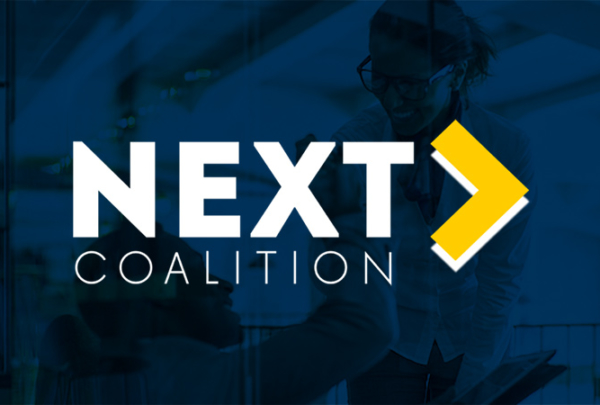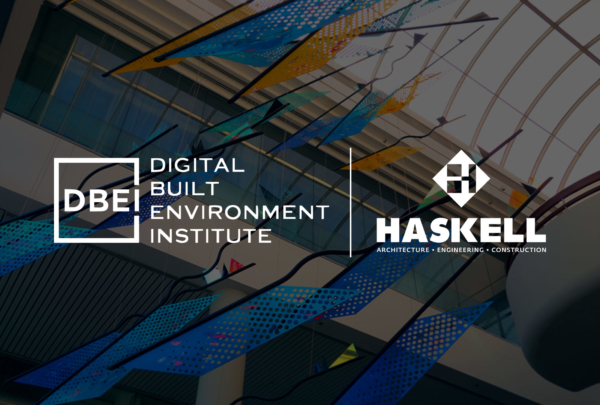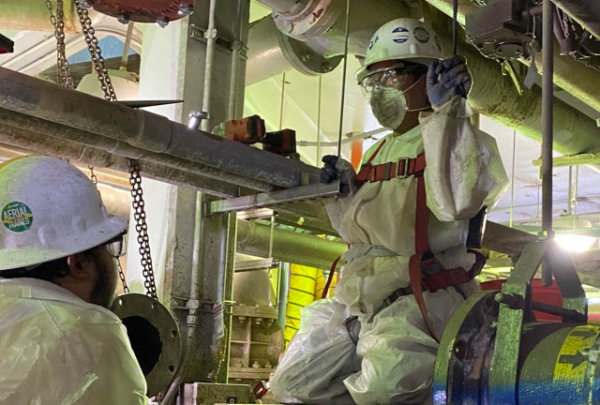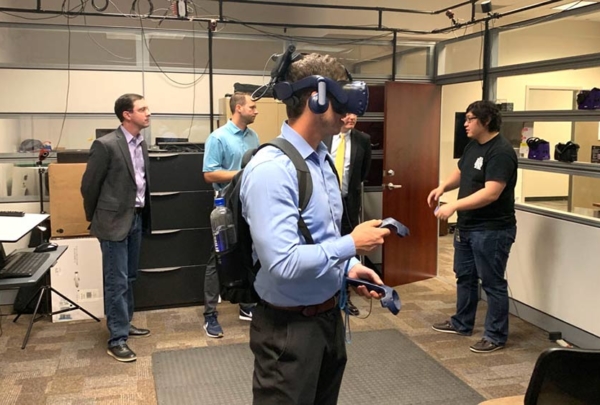It’s a ritual for architecture, engineering and construction (AEC) industry publications to weigh in with predictions of trends in the coming year.
Little surprise, the day’s highest-profile topics – innovation, artificial intelligence (AI) and sustainability – made every list. In a more industry-specific vein, there is a consensus that workforce training and safety are also common priorities.
It’s with pride that we can say that if those are the places where the puck is going, Haskell has skated there already. In each category, the company’s industry leadership is on full display and has received glowing external validation.
High Demand for Green Building
The shift from traditional materials to sustainable building dominated 2023 and, no doubt, will continue to evolve.
In its 2024 Engineering and Construction Industry Outlook, Deloitte Insights reports that the U.S. Green Building Council (USGBC) 2023 report, sustainability is a top priority for most surveyed E&C firms, as it aligns with their organizational mission and business strategies. Strategies such as reducing the embodied carbon of essential construction materials, passive design principles and the use of energy-efficient equipment can accelerate decarbonization by minimizing the overall carbon dioxide emissions associated with the construction and operation of a building.
As environmental concerns grow, sustainable construction practices are gaining momentum and attention. Green building materials, energy-efficient designs, and renewable energy integration are becoming standard features in modern construction projects.
With the growing adoption of efficient building materials and sustainable construction practices, the industry is expected to be better positioned to accelerate changes and align with the International Energy Agency’s Net Zero Emissions by 2050 Scenario, which requires all new buildings and 20% of existing structures to be zero-carbon-ready by 2030.
Haskell was an early adopter of sustainable design and construction. It joined the USGBC in 2001 and has built nearly 120 LEED-certified facilities. The long-established Haskell Sustainability Council includes several of the more than 100 sustainability-accredited professionals in the company. Haskell’s integrated delivery model naturally supports enhanced green design and construction throughout the project lifecycle, a focus that will only redouble as regulations and customer needs intensify.
“Going forward, I think there's going to be much more of an emphasis on how we minimize embodied carbon and get to a net positive building where, in the lifespan of that building, five years, 10 years, 15 years out, it has actually produced less carbon than it created or caused,” said Frank Mangin, Design & Consulting Operations President. “At some point, it becomes a net-positive carbon building.”
Technology Adoption as a Competitive Edge
From 3D printing to robotics, construction technology has changed the industry forever. It’s allowed for greater efficiency when building, streamlined project management and more transparent surveying, greatly benefiting a business’s bottom line.
The construction industry is the second least digitized industry, but it won’t stay that way long. In 2023, around a third of construction companies reported using AI and prefabrication technology in the previous 12 months, and 40% of industry professionals plan to purchase or upgrade their construction management software in the next year. Both numbers are expected to accelerate in 2024.
Haskell counts among its strategic pillars the goal of optimizing intellectual capital, technology and innovation. To that end, it created Dysruptek, its venture arm dedicated to scouting, piloting and investing in emerging technologies and capitalizing on the innovations born within its diverse employee base.
Global insurance carrier AXA XL ranked Haskell No. 1 in the 2022 Technology Adoption Maturity Index (TAMI). The second annual designation celebrates Haskell’s leadership in embracing innovation and adopting technology solutions.
Not surprisingly, the top two entries in the fourth annual Big Pitch, Dysruptek’s Shark Tank-styled competition, harness artificial intelligence (AI) to address pain points in the project lifecycle. Each team received a cash award, funding and support to develop their innovations.
The winner, Smart Blocks, will use generative design to provide coordinated and detailed designs with faster and more accurate cost estimates during the preconstruction phase. Runner-up Load Builder envisions AI-powered software to revolutionize shipping logistics for Haskell Steel, which fabricates and ships thousands of tons of steel annually.
Workforce Training and Development
AEC firms face a workforce in transition. With more than 20% of construction employees older than 55, generational change makes finding and retaining high-quality talent imperative. In addition to continued outreach, many are embracing training to close the labor gap.
Training, apprenticeships and certifications are vital to maintaining the AEC workforce. Inexperienced team members can be transformed into experts in their craft, and business owners can reward loyal employees by furthering their professional development. Companies can also cross-train employees in other functions and broaden their expertise to create a flexible, efficient workforce.
Haskell led craft development and cross-training through its revolutionary Permanent Craft Employee (PCE) program. Deep ties to science, technology, engineering and mathematics (STEM), Career and Technical Education (CTE) and apprenticeship programs have helped it develop the professionals of tomorrow.
But the educational commitment goes beyond the team of tradesmen. Professional education and development across all disciplines were identified as the key to supporting clients with consistent best-in-class performance as Haskell grew in scope and scale.
This commitment and investment led Haskell to the No. 1 spot in Training Magazine’s APEX Awards rankings, an exclusive list of the leading training organizations worldwide. The company has appeared in the rankings for 11 consecutive years, climbing steadily. Reaching the pinnacle in the 2023 list marks the company’s fifth straight appearance in the Top 20, the fourth straight in the Top 10 and the third consecutive year in the Top 5.
“The LD&E team and Haskell’s training programs have found success because we align ourselves to Haskell’s business goals, making sure our approach to training is firmly rooted in Haskell 2025 and ensuring everything we do is supporting those six strategic pillars,” said LD&E Director Brooke Jones-Chinetti. “We’ve looked at what the company expects of its performance and of its team members, and we’ve tailored training to support that.“
Worker Safety
Across the industry, worker safety is an ongoing challenge. Since 2008, construction has experienced more total deaths than any other industry (and that figure doesn’t include fatalities from suicide — of which this industry also has the most). Construction professionals have higher injury rates than most other professions and experience some of the highest rates of alcohol abuse. And if they survive an entire career on the jobsite, workers can expect an increased risk of hearing impairment, mobility problems, and respiratory issues.
While other firms look to more frequent inspections, better safety guidelines and equipment, technology and certifications to rectify problems, Haskell proudly stands as an industry leader in safety, having received the ABC’s Pinnacle Award for Safety in three of the past four years.
Statistically, Haskell is measured against the commercial construction industry based on Total Recordable Incident Rate (TRIR), which the U.S. Bureau of Labor Statistics compiles. In 2022, Haskell team members recorded a TRIR of 0.28 while executing more than 4.2 million manhours. This represents a performance that was the third-best in company history, 10 times better than the industry average.
“When we (visit job sites), the feedback you get is, ‘You can tell a Haskell project. It’s different from others we've worked on,’ man that's rewarding,” he said. “Nothing is more rewarding than having a trade professional get engaged by leadership and say they work for other companies and know that on a Haskell project, safety is most important. That's where we want to be. “
 About the author: Kurt Caywood is Haskell's Director of Corporate Content and the Editor-in-Chief of Haskell.com. Kurt is an award-winning writer, editor and organizational leader. He has extensive experience at the intersection of audience, digital media, marketing, revenue, and data.
About the author: Kurt Caywood is Haskell's Director of Corporate Content and the Editor-in-Chief of Haskell.com. Kurt is an award-winning writer, editor and organizational leader. He has extensive experience at the intersection of audience, digital media, marketing, revenue, and data.
At Haskell, we take our clients’ goals as our own. We innovate constantly to ensure that we deliver world-class solutions with the best possible effectiveness, efficiency and performance. Contact us to discuss your facilities needs.
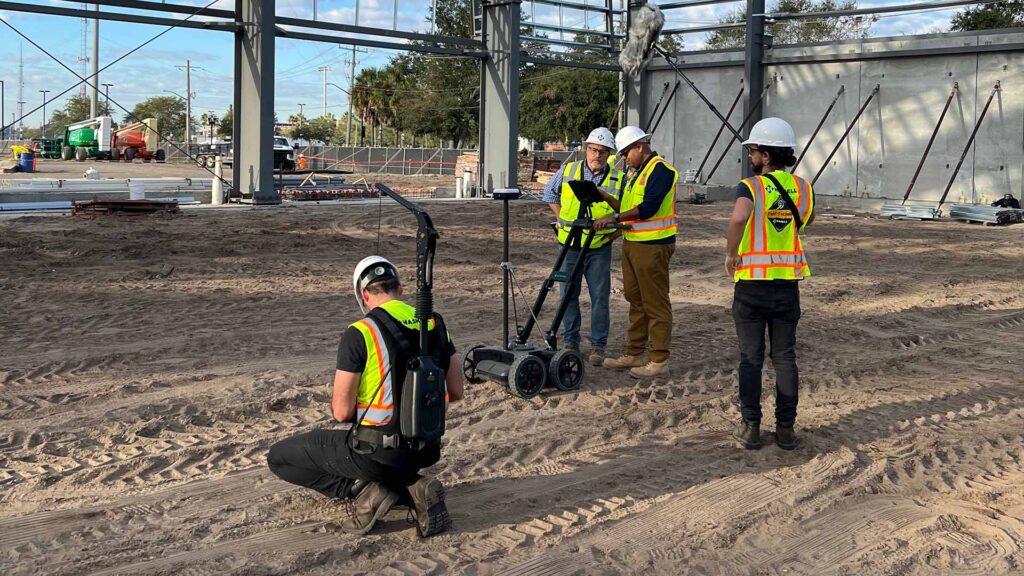
 About the author: Kurt Caywood is Haskell's Director of Corporate Content and the Editor-in-Chief of Haskell.com. Kurt is an award-winning writer, editor and organizational leader. He has extensive experience at the intersection of audience, digital media, marketing, revenue, and data.
About the author: Kurt Caywood is Haskell's Director of Corporate Content and the Editor-in-Chief of Haskell.com. Kurt is an award-winning writer, editor and organizational leader. He has extensive experience at the intersection of audience, digital media, marketing, revenue, and data.